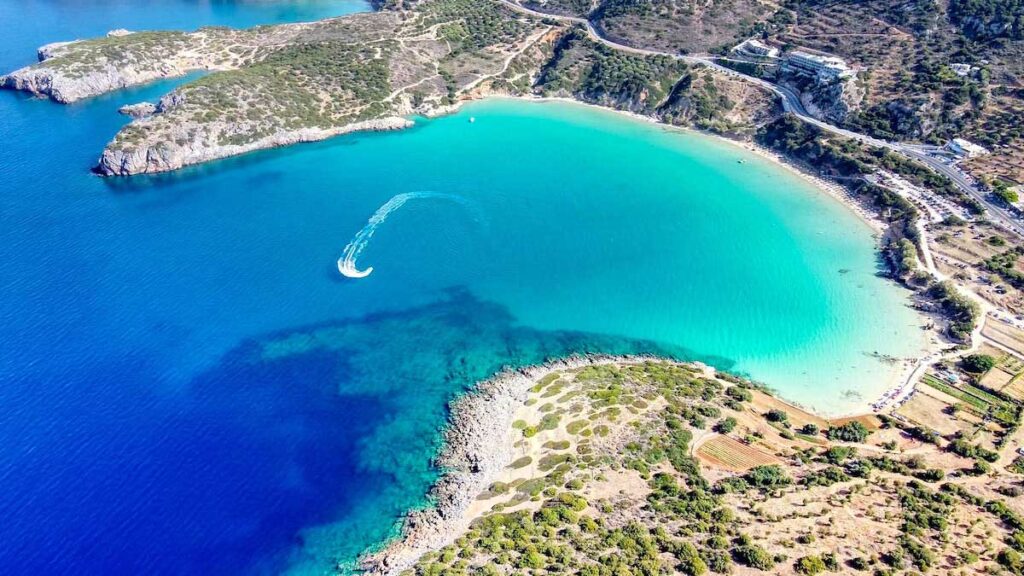Home to the most extensive coastline of all Mediterranean countries and rich in ancient history, diving in Greece is hard to beat. This fascinating destination has crystal-clear waters dotted with wrecks from ancient times through to modern-day wrecks. There are thriving reefs, marine parks and lava landscapes, plus idyllic islands that host sea turtles, dolphins and seals. Offering hundreds of fish species and colourful reef life as well, Greece is a paradise for any diver. Read on to find out more.
8 great places to go diving in Greece
1. Crete
There are dozens of dive sites to choose from all around Crete, though the south coast has some of the island’s best diving and few crowds. Skinaria beach has soft sands and impressive clear waters that are brimming with life. It is the perfect place for easy shore dives, though there are exciting walls and drop-offs in the area as well.
You can dive among striking stalactite and stalagmite formations and visit the fossilized remains of an extinct elephant at Elephant Cave. Crete’s capital Heraklion is also a great place to go diving. As well as having caves and reefs, there are several wrecks, including a WWII Messerschmitt. For diving in crystal-clear lagoon waters among colorful corals, don’t miss Rethimno.
2. Peloponnese
The Peloponnese region was the site of the first Olympic Games in 776 BC and has been home to numerous ruling kingdoms across the centuries. This fascinating history has created an array of wrecks, including one of Greece’s best wrecks, the Andros. There are 19th Century Ottoman ships to explore at the Bay of Navarino, plus ancient wrecks full of artefacts at Pilos.
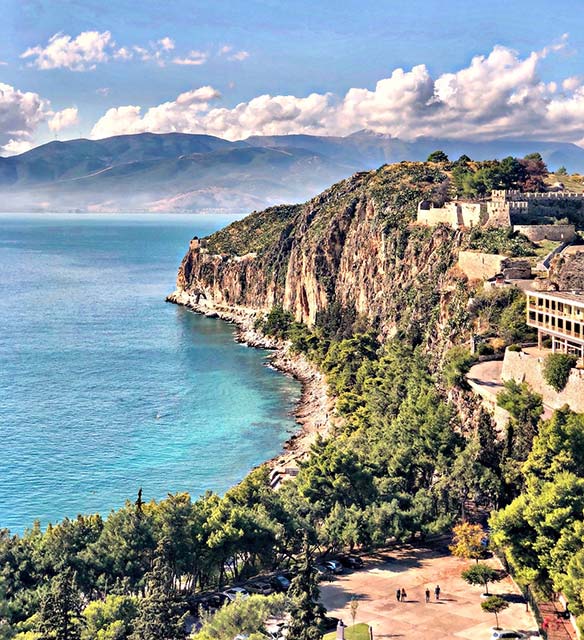
Added to that, the Peloponnese peninsula has numerous healthy reefs, plus rocky landscapes and canyons. Atlas Reef is a gorgeous shore dive suitable for all experience levels, and advanced divers won’t want to miss the Blue Canyon dive site. Wherever you choose to dive, there are hundreds of fish species to find, plus bright sponges and groupers. Sharks also visit this special area during the warm summer months.
3. Attica
With a history that dates back thousands of years, it is no surprise to find the Attica region has 2 UNESCO World Heritage Sites, the Atticalis of Athens and the medieval Daphni Monastery. This peninsula jutting out into the Aegean Sea is also home to Greece’s capital, plus numerous archaeological sites and seaside villages.

Head underwater near Athens and you will discover a diverse range of wrecks, thanks to the area’s rich history of trade. You can see a wreck on almost every dive, taking you from ancient times up to the present day. There are also numerous accessible reef diving spots near Athens, offering coral-encrusted walls, rocks and caves busy with Mediterranean reef life.
4. Dodecanese Islands
Home to Rhodes, Kos, Kalymnos and dozens of other islands, the Dodecanese are a stunning place to go diving in Greece. These islands are dotted with medieval castles and have spectacular beaches framed by charming villages.
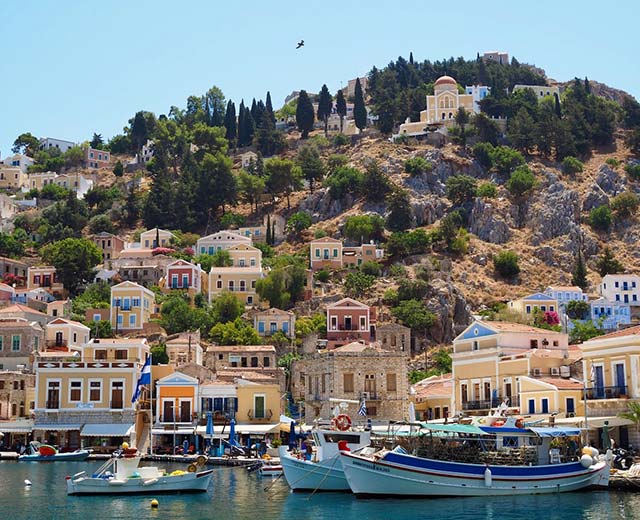
This is one of Greece’s best destinations for new divers, with plenty of shore dives and house reefs. Rhodes offers diving with seals at the Cave of the Seal, and there are shallow wrecks to explore. You also have the chance to see dolphins in the deeper waters off the islands.
5. Cyclades Islands
The Cyclades Islands host some of Greece’s best-known diving spots and have fascinating volcanic landscapes to explore. The Dragonisi Island Caverns at Mykonos offer stunning underwater rock formations and Kea’s Kysla Bay is bustling with colorful fish life. If you’re an experienced technical diver, you can dive the famous HMHS Britannic. This sister ship of the Titanic sits at 120 meters deep and is an incredible wreck dive.
Once the site of an enormous eruption, Nea Kameni by Santorini offers diving in a clear caldera washed by the sea. As well as having volcanic sea caves and beautiful lava formations, there is even a wreck to dive inside the volcano. Divers from around the world go Santorini diving to experience these unique dive sites and to enjoy Santorini’s year-round clear waters.

6. Sporades Islands
If you’re travelling with non-divers, the Sporades Islands are a great choice. Made up of 24 islands in the northwest Aegean Sea, the Sporades have excellent snorkelling off the coast of every island. Alonnisos and Skyros are the best islands for diving.
Alonnisos hosts a beautiful marine park with one of the best-preserved ecosystems in the Mediterranean. The waters are gin-clear and calm there, making it ideal for new divers. There are great wrecks to explore as well, plus dolphins and rare Mediterranean monk seals. Skyros is more remote than Alonnisos and has many caverns and caves that advanced divers will enjoy.

7. Ionian Islands
If you love sea turtles, the Ionian Islands are a must. Lying just off Zakynthos, the uninhabited island of Marathonisi is a nesting site for loggerhead turtles, which you can see when swimming there. You can also spot nesting loggerheads at Kefalonia’s beaches from late May to August.
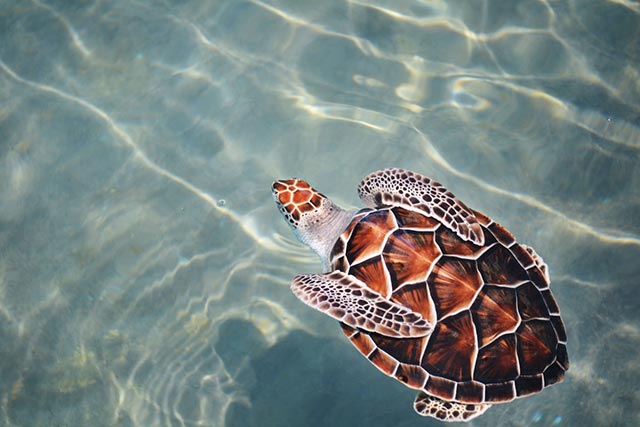
As well as sea turtles galore, the Ionian Islands have thriving Mediterranean reefs and rocky landscapes dotted with dive sites. There are many WWII wrecks, including the HMS Regulus off Corfu and the HMS Perseus off Kefalonia. Once a WWII British submarine, the Perseus now sits at over 50 meters deep and is a vibrant artificial reef loved by tec divers.
Diving in Corfu, the largest of the Ionian Islands, offers a remote dive experience with azure blue seas and numerous dive sites for every experience level. This popular destination has underwater caves, thrilling walls, swim-throughs and limestone reefs. Above water, Corfu is also home to the famous Corfu Trail; a spectacular walk that is over 100 miles long.
8. North Aegean Islands
Sitting in the north Aegean Sea and closer to the Turkish mainland than to Greece, the North Aegean Islands offer untapped diving potential for those who like to leave the beaten path behind.
There is a variety of dive sites to those from among the North Aegean Islands, but the real highlight is wall diving there. Chios has some of the best and most dramatic wall dives in Greece, including the Great Wall; a vast wall that is swathed in vibrant corals.
Lesvos is relatively undiscovered as a dive destination and has some great shore dives and volcanic formations, whilst Palios is surrounded by eye-catching reefs.
What marine life can you see when diving in Greece?
Greece’s warm waters host a diverse array of life, including classic Mediterranean species and some invasive species from the Red Sea. Summer is the best time to visit for sharks, sea turtles and dolphins, though there is plenty of fish life in Greece’s flourishing waters year-round.
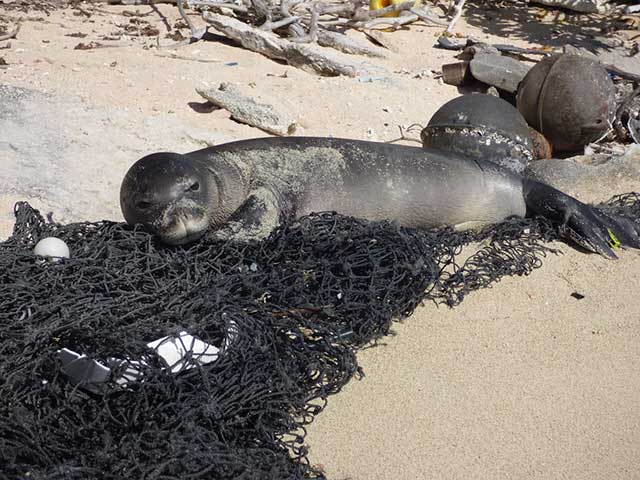
Greece is home to hundreds of fish species, including wrasses, groupers and angelfish. The reefs host diverse corals and sponges, with octopus, moray eels and plenty of smaller critters hiding in the shadows.
You can also spot eagle rays and stingrays at this diverse destination, plus big pelagic fish in the blue.
What diving experience to you need to go diving in Greece?
Diving in Greece is suitable for all experience levels.
When is the best time to go diving in Greece?
Greece’s main dive season runs from May to November, though you can dive there all year.
- Visit from June to August for the best dive conditions and abundant marine life.
- Visit during May, October and November for good dive conditions and fewer crowds.
Kathryn Curzon, a shark conservationist and dive travel writer for Scuba Schools International (SSI), wrote this article.
Main photo credit: Evangelos Mpikakis/Unsplash
